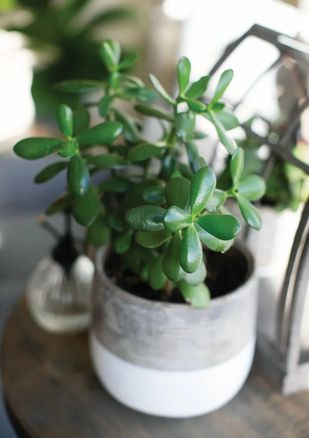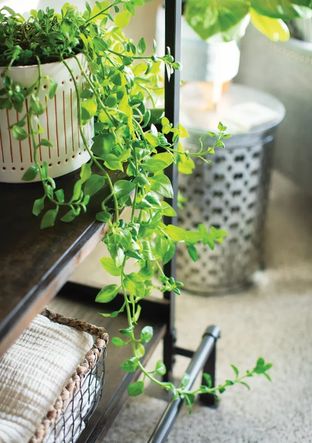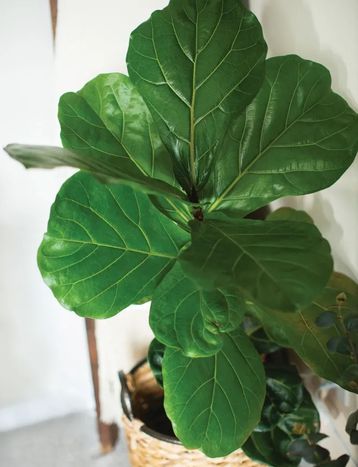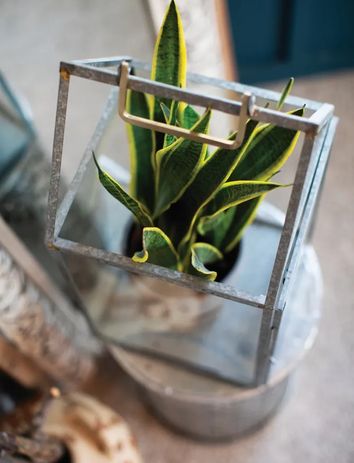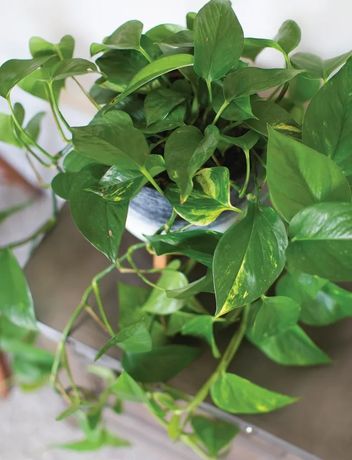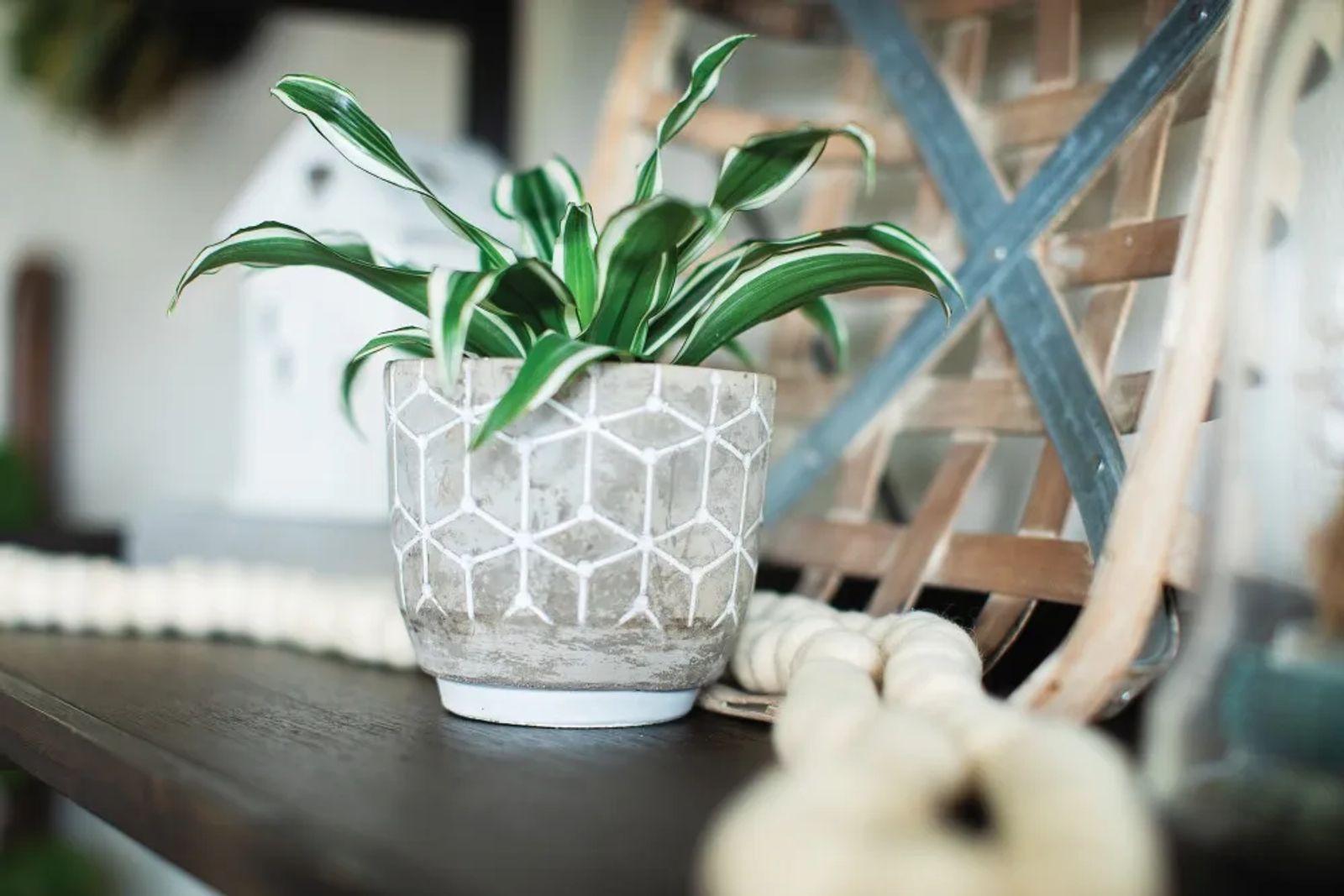
Spider Plant- thrives with bright, indirect light
Happy Houseplants: Bringing Green Indoors
April 2021
by ashlynn reynolds-dyk | photos by lovely hitchcock
Plants give us oxygen for the lungs and for the soul. ~Linda Solegato
While we spend a lot of time in our homes, it is a great time to think about ways to improve your mood, reduce fatigue, lower stress and anxiety, improve your work performance and focus, and discover ways to improve your overall physical and mental health. So, how to do this? Is there a magical cure? Well, likely not, but there are houseplants, and there is a great deal of research that shows bringing green indoors can help with all of this. Additionally, through photosynthesis, houseplants increase oxygen in the room through phytoremediation; they absorb and reduce harmful pollutants and gases. In short, houseplants improve the air quality of your home (or office!), in turn minimizing the adverse effects air quality may have on your health. Not to mention the unique visual appeal they add to any space. So, where to start?
All plants have slightly different needs, but generally speaking, they need the right light exposure, watering schedule, container, and soil. Here is a little more information on each of these:
Lighting: Bright, Low, Moderate, Direct, and Indirect
Most plants do not fare well with bright, direct light. They actually sunburn and overheat (especially if magnified by a windowpane). Cacti and succulents are two that do well with bright, direct sunlight. Most plants, however, do best with bright, indirect light. For example, a plant in a well-lit room that gets plenty of natural light but does not absorb the sun's rays directly. This is bright, indirect light, and some plants that thrive in this include spider plants, ficus, and fiddle leaf plants. Some plants do well with moderate to low-light, so do not lose hope if you want to bring green inside but are worried your space does not have enough light. All plants need at least some light, yes, but pothos, snake plants, and philodendron will grow well in the least light. Additionally, there are ways to maximize light in a room by painting the room light colors or hanging mirrors—both help reflect light.
Watering: Schedule and Drainage
First of all: Most people's plants die due to overwatering, although most think it is due to neglect. Most plants need to be watered only once a week, except tropical plants like elephant ears and alocasia, for example. Plants breathe through their roots, so you generally do not want sopping wet soil. Watering plants when the soil gets somewhat dry is usually a best practice for most plants. Getting on a consistent schedule will help you and your plants. You can vary the amount of water you give to each of your plants—some want more than others.
Additionally, it is essential to have drainage for your plants. If they do not have drainage, they will die. Drip pans allow for this drainage while keeping water from getting all over and potentially ruining your furniture or flooring. Some plants come with drip pans built into their containers, but you can also buy drip pans or make your own (it can be as simple as using a plate). Nesting is another option where you put a smaller container with drainage into a larger container.
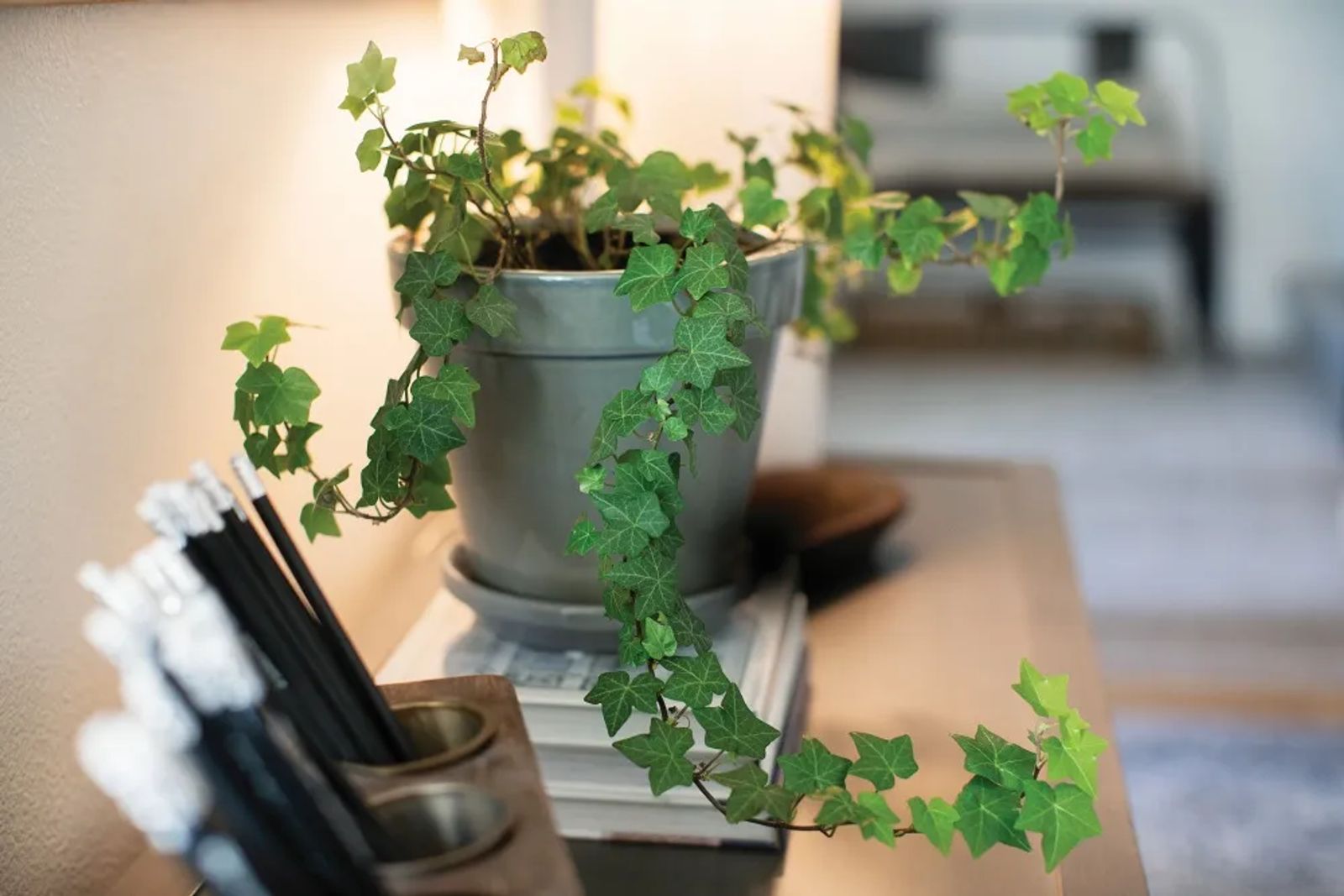
English Ivy- indirect light
Potting: Soil, Space, and Propagating
If you are planting your own plants or adding soil to compacted or sunken plants, use bagged potting soil or one labeled for container gardening. It should be fluffy and well-draining and always contain some perlite or pumice. Some tropical plants like elephant ears do best with some compost (tropical plants tend to be a little more high maintenance). Plants are generally restricted in size by the container in which they grow. That said, plants may need to be transplanted if they've been in the same container for a long time, are heavy or toppling over, look sad, have stopped growing, or if you notice water running immediately through the soil and out the bottom. Plants should be sized up gradually for best growth. Many plants—succulents especially—can be propagated, which means you can use seeds, cuttings, and other plant parts to start new pots of plants.
5 Low Maintenance Houseplants:
Do you like the idea of houseplants but are sure you will kill them off before they can ever fulfill their potential to improve your quality of life? You need plants that thrive in moderate or indirect light, love standard household humidity and temperature, grow well in typical potting or succulent soil, and will survive periods of neglect. Here are a few plants that are nearly impossible to kill off:
- Golden Pothos (or Devil's Vine or Devil's Ivy)): a trailing plant with heart-shaped leaves
- Snake Plant (or Mother in Law’s Tongue): tall stiff leaves of dark green, sometimes with a yellow stripe along the edges of the leaves
- Spider Plant: rosette of long, thin, arched foliage that is solid green or variegated with white
- Aloe Vera: a succulent variety (most succulents are low maintenance) that is stemless or short-stemmed with thick, greenish, fleshy leaves that fan out from the plant’s central stem; the leaves are serrated with small teeth (and yes, you can use the gel they produce for the various health benefits you have heard about—an additional perk!)
- Rubber Plant: tree-like plants that are known for their great height and leaves that have a shiny and rubbery appearance
Originally printed in the April 2021 issue of Simply Local Magazine
Never miss an issue, check out SLM's digital editions here!

